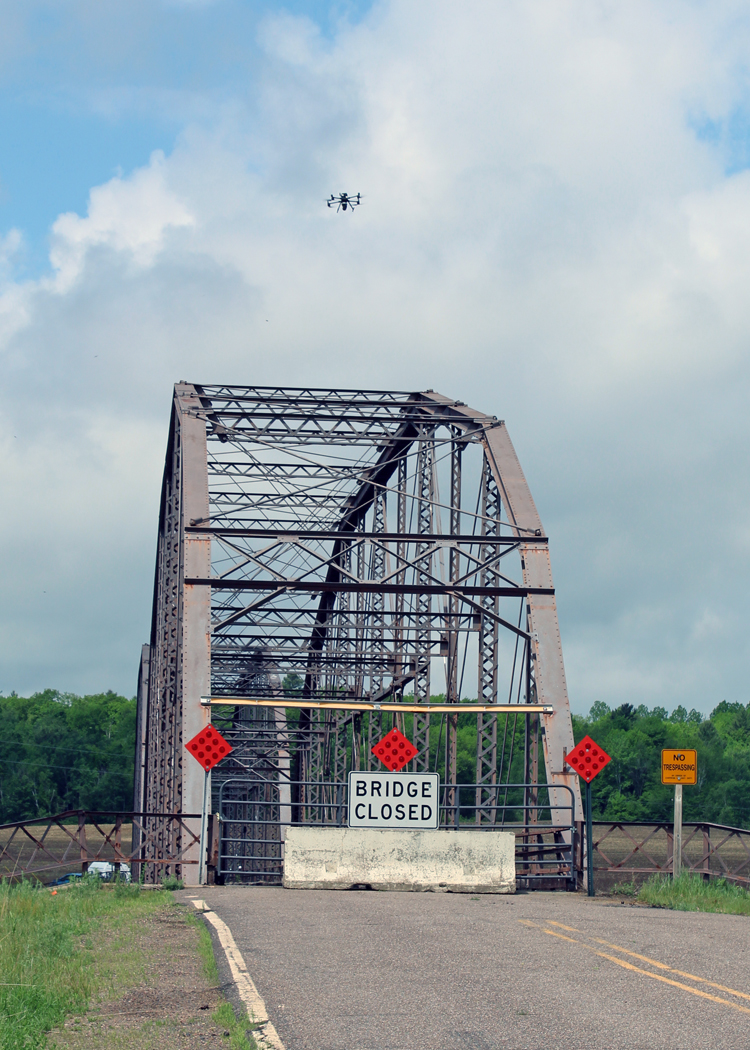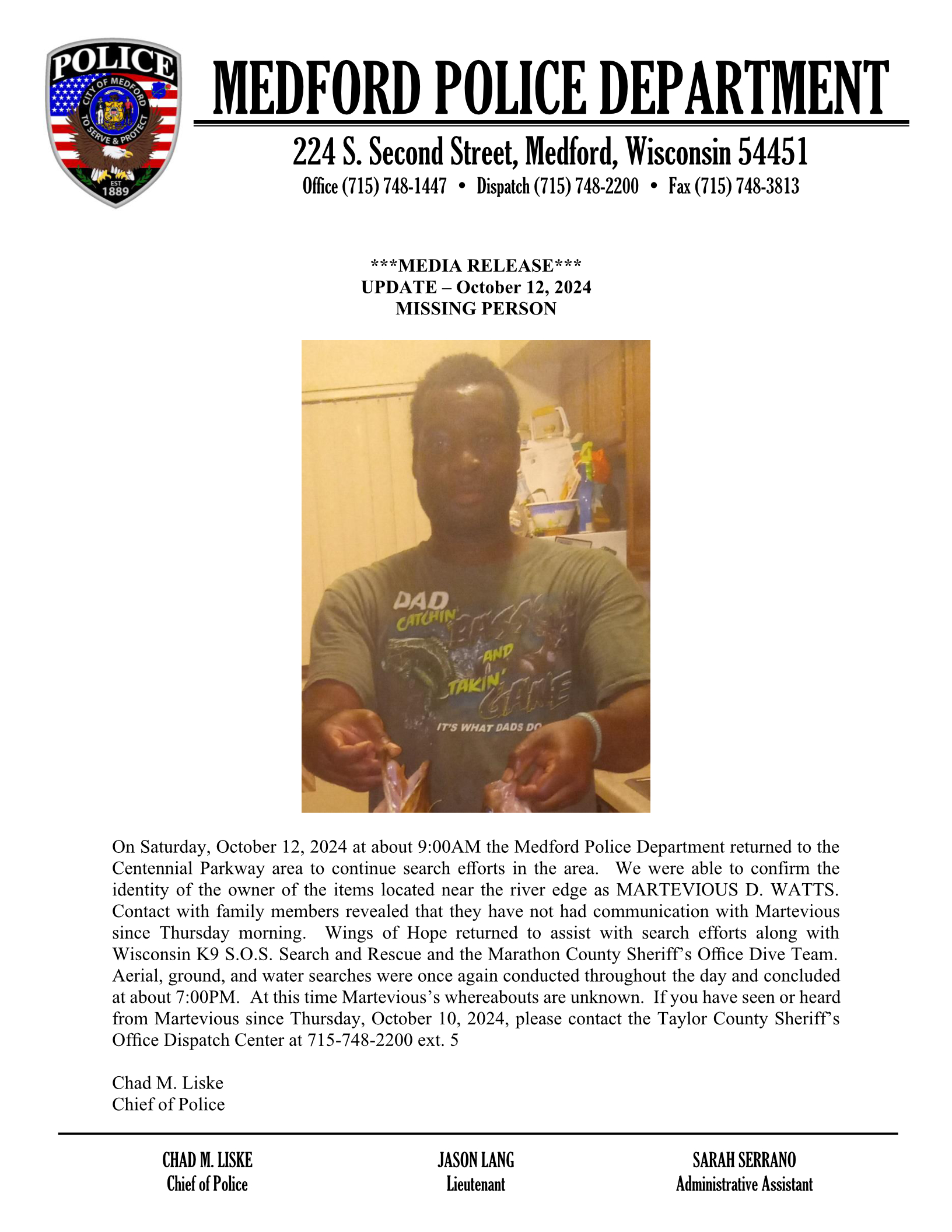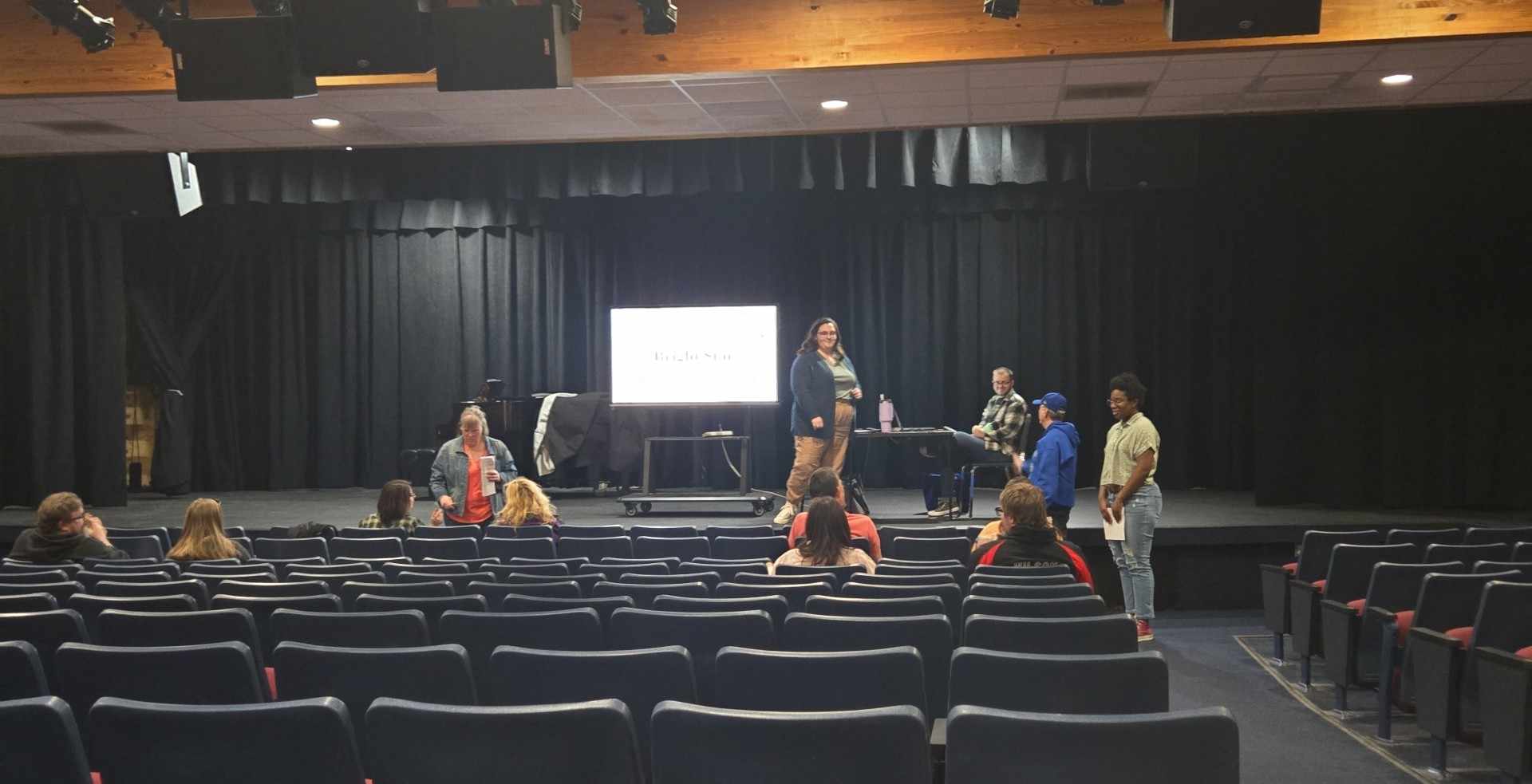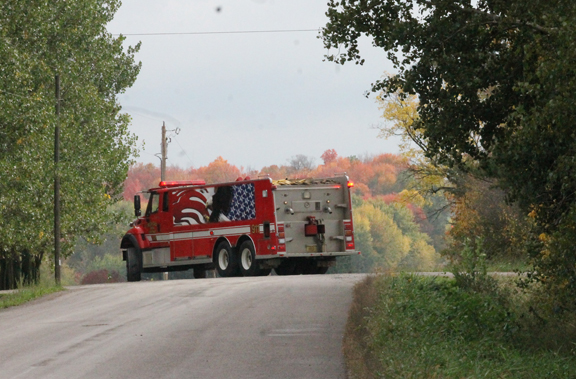Cobban Bridge scans help preserve history


A drone with a LiDAR scanner attached to it was also used at the site. The scanners capture structures as they actually are, not as they are perceived, down to the details of the rivets and bolts. Photo by Julia Wolf
By Julia Wolf
Those passing by Cobban Bridge, between Cornell and Jim Falls, May 25, may have noticed some action. Efforts were underway to preserve the history of the bridge, even as the physical structure is set to be removed in 2022.
Crews were on hand, using a LiDAR (Light Detection and Ranging) scanner to create a digital copy of the bridge.
Matt Jarosz, executive director of the Wisconsin Trust for Historic Preservation and director of the Historic Preservation Institute, says the free scanning and drone services were offered as part of the Wisconsin Trust.
“They’ll be online, publicly accessible,” said Jarosz of the files collected.
He says the trust is particularly interested in areas of the state, which are outside significant metropolitan areas.
William Krueger, historic preservation institute-documentation director at the UW-Milwaukee’s School of Architecture and Urban Planning, says a LiDAR scanner provides a non-invasive method of data capture.
Krueger says the technology is used to document anything you can see, something he has done since 2007, and teaches to students.
“It’s accurate down to the rivets, the bolts, everything,” said Jarosz.
Jarosz says heritage items, like the bridge, can be difficult to measure and document accurately.
“So, people don’t,” said Jarosz. “They just demo them and call it a day.”
He says the scanning helps alleviate some of those diffi culties.
Jarosz says the trust is trying to elevate itself, to become useful to people around the state.
“Our intentions are kind of two-fold,” said Jarosz. “One, is to raise awareness about these heritage items.”
He says the second intention is to do proper recording, so even if the items do go away, there is at least computerized data available.
Krueger says the scans provide a snapshot in time, which can be used to draw up the structure later, create a 3D model in reality at any scale, or even be used to explore the bridge later in virtual reality (VR).
Jarosz says the data, as well as recreations and photos from it, can also be used by researchers and instructors in lectures, and for viewing at historical societies.
The LiDAR scanners used at the site, gather 960,000 points of data per second.
Jarosz says industrial artifacts have not typically been viewed as important heritage items.
“There’s kind of a new awareness about some of the interesting and important industrial artifacts from the past,” said Jarosz.



